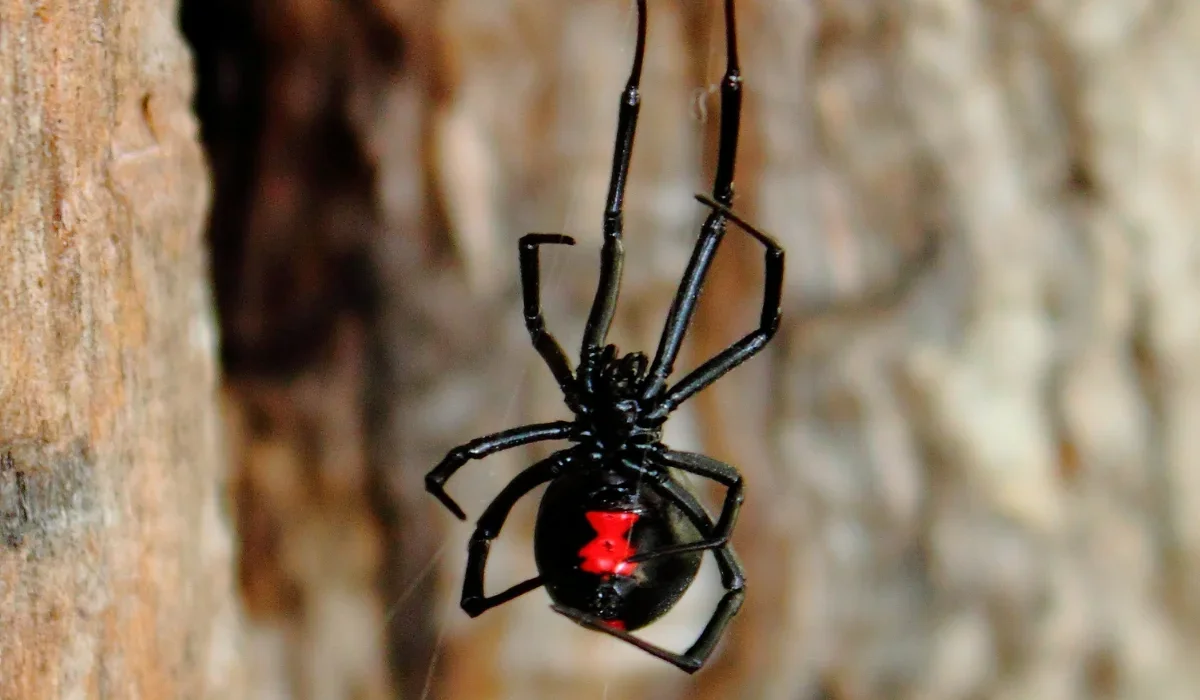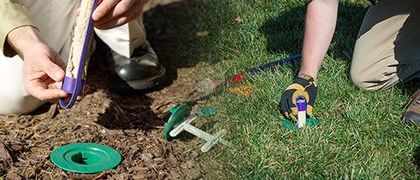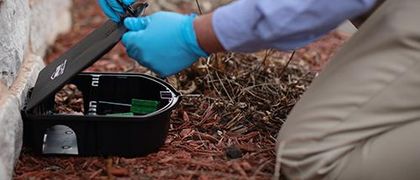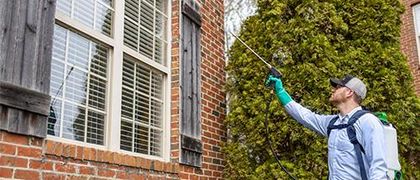The Most Dangerous Spiders in Iowa
Most Iowans see a house spider now and then. They show up in corners, basements, or even the bathtub. Most of the time, they’re harmless. But not all spiders are safe. Some can cause painful bites, and in rare cases, those bites might need medical attention.
In the state of Iowa, especially around cities like Des Moines, several types of spiders are considered dangerous.
Let’s break down each of them and what to do if you find one in your home.
Key Takeaways
- Brown recluse and black widow spiders in Iowa can bite and sometimes cause serious skin damage or health problems.
- Yellow sac, wolf, and fishing spiders are common in homes and may bite, but usually do not cause serious harm.
- Some common spiders, like jumping, cellar, and garden spiders, are harmless and help by eating other bugs.
- Miller Pest & Termite protects Iowa homes by checking and treating garages, basements, and crawl spaces for spiders.
Brown Recluse Spider

Brown recluse spiders are quiet and shy. You probably won’t see them during the day.
These venomous spiders like dark places such as closets, basements, or behind boxes. They are small, dark brown, and have a violin-shaped marking on their back.
Brown recluse bites can be serious, though they’re often hard to confirm.
Their bites can cause sores that don’t heal well and may lead to necrosis, where the skin breaks down. In some cases, like one reported in Michigan, people have developed more serious symptoms and needed hospital care.
While not every bite turns out that bad, you should see a doctor if you notice a sore that gets worse.
Black Widow Spider
The black widow spider is easy to spot if you get a good look. They aren’t common in Iowa, but they do show up from time to time, especially around cluttered, dark spaces.
Female black widows are shiny black and have a bright red hourglass mark on their belly. They usually stay hidden under woodpiles, in crawl spaces, or in corners of sheds.
A black widow bite can cause pain, cramps, and nausea, and in some cases, much more serious health problems.
A study of real bite cases found that some people developed fever, breathing trouble, and even organ damage, especially if they were older or already sick.
Yellow Sac Spider

This type of spider is small and pale. The yellow sac spider is active at night and doesn’t build webs to catch food. Instead, it hunts. This means it might crawl across walls or furniture and accidentally bite people.
Most spider bites aren’t serious, but they can still cause pain and swelling. In one case, a woman’s finger turned discolored after being bitten.
They are more common indoors than many realize and are a frequent reason for spider-related calls.
Wolf Spider
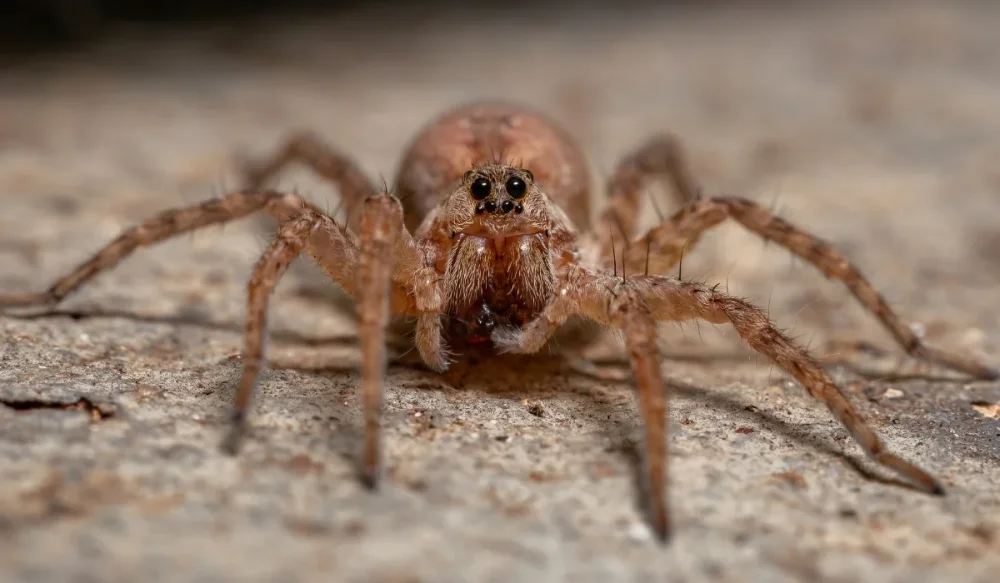
The wolf spider is big, hairy, and fast. It hunts instead of building webs. You’ll often find it in tall grass, around garages, or even in basements.
Because of its size and speed, it can look scarier than it really is. It can bite, but it isn’t as dangerous as a brown recluse or black widow spider. A bite might sting and cause some redness or swelling, but it usually doesn’t lead to serious skin problems.
In rare cases, the bite might get infected and need medical care, but with proper cleaning and treatment, it tends to heal without issues.
Yellow Garden Spider
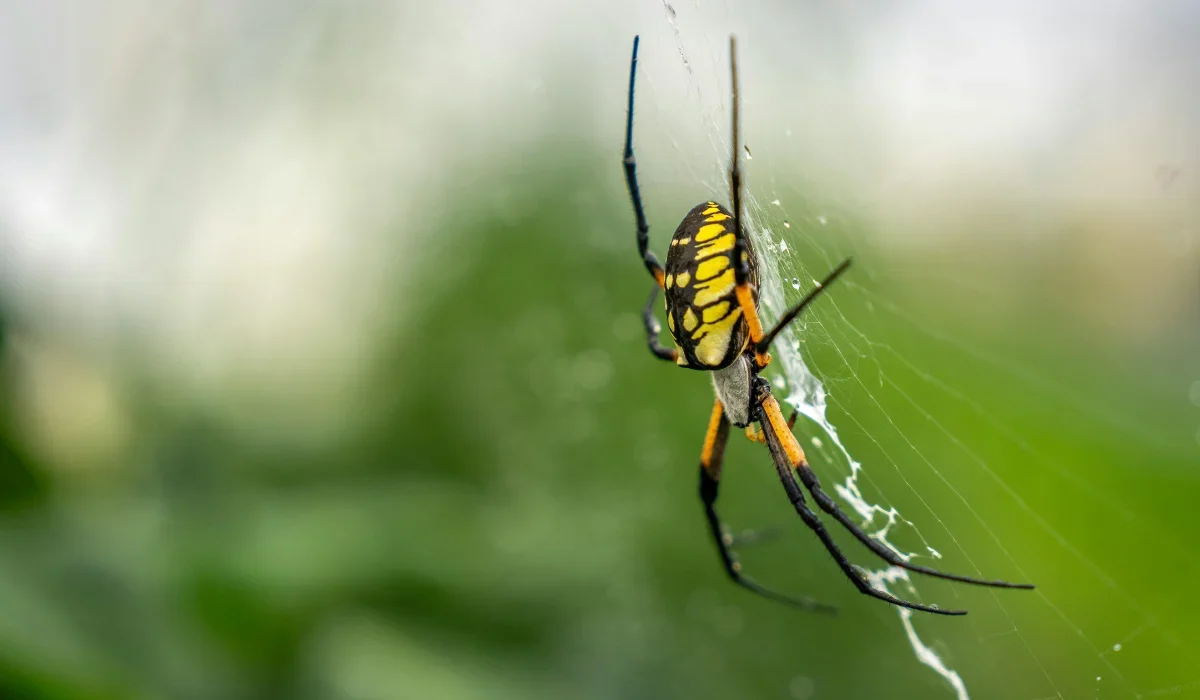
The yellow garden spider is a type of orb weaver.
You’ll find it outside in gardens or hanging on big webs between bushes or fence posts. They are black and yellow, and their webs often have zig-zag patterns.
These spiders look flashy, but they’re not harmful to people.
They help control pests like flies and mosquitoes, so there’s no need to get rid of them unless they’re building webs where you need to walk.
Jumping Spider
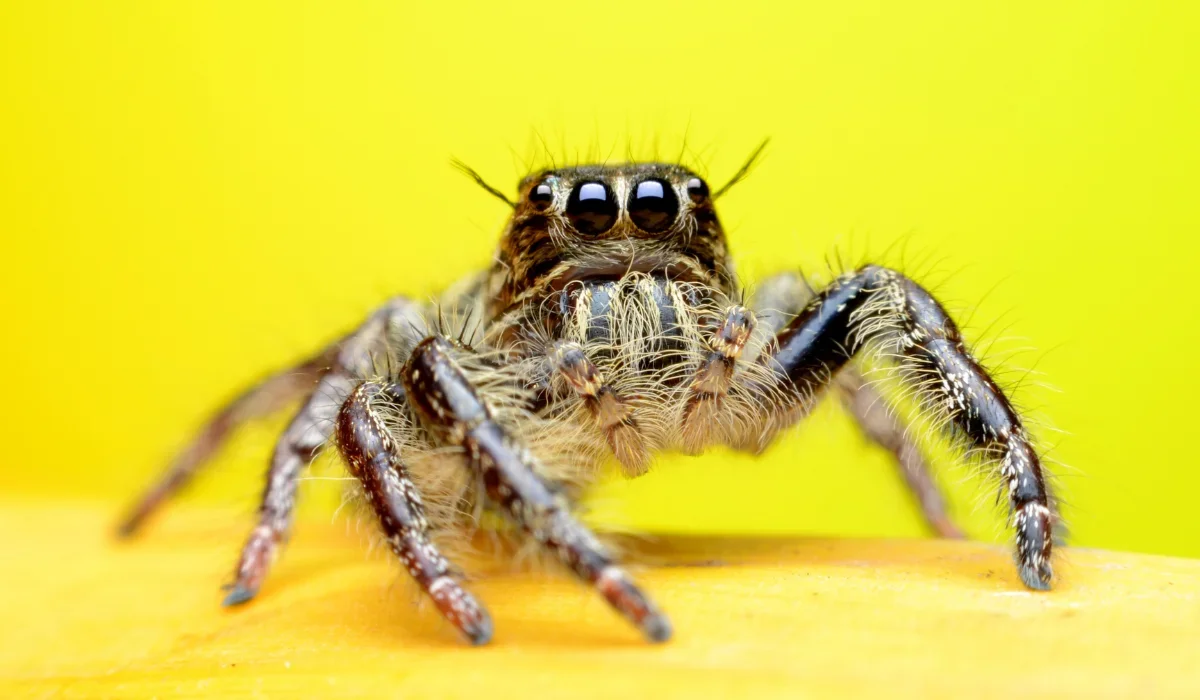
Jumping spiders are small and kind of cute with their big eyes. They move quickly and, as the name suggests, they jump. You might see them on windowsills or inside sunrooms.
These spiders are not dangerous.
Their bite is rare and feels more like a mosquito bite if it happens at all.
Fishing Spider

The fishing spider is one of the largest spiders in the Midwest.
It often lives near water, like ponds or creeks, but can sometimes be found in damp basements too. These spiders are fast and can even run across water. It looks a bit like a tarantula but isn’t.
A bite might hurt, but it’s not dangerous unless you have a strong reaction.
Cellar Spider
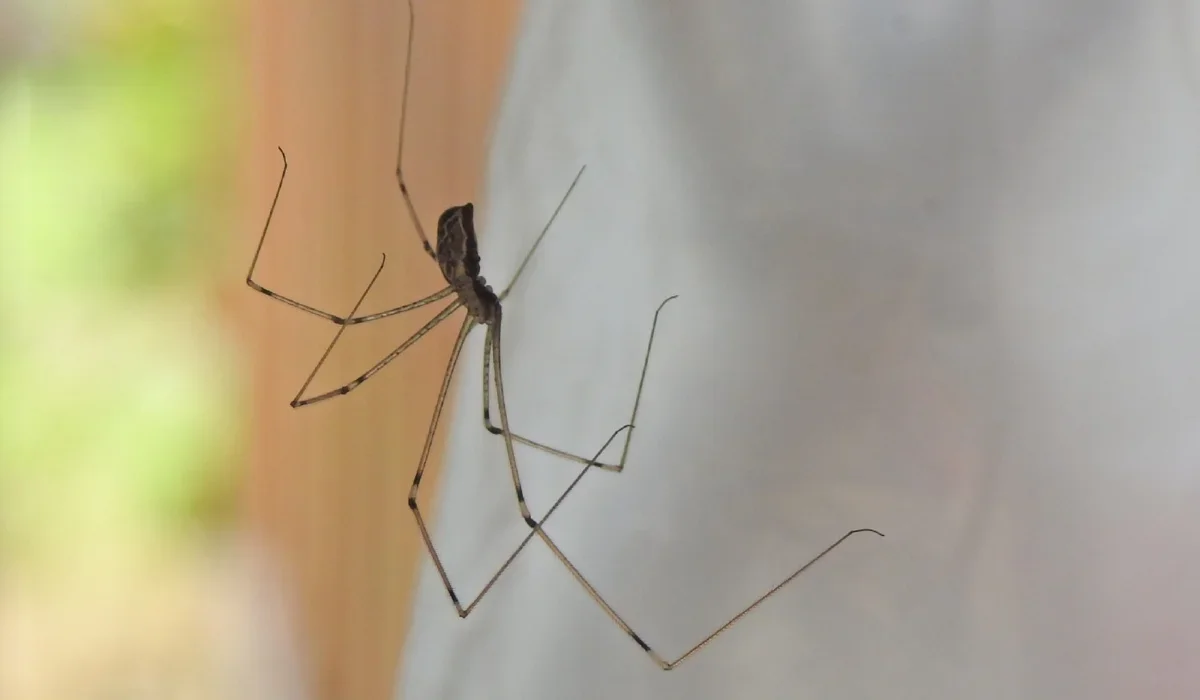
Cellar spiders are the ones with really long legs that hang out in webs in corners or on ceilings. They’re super common in basements, garages, and crawl spaces.
Sometimes they’re called daddy longlegs (though that’s a different insect).
These spiders don’t bite people. They’re harmless, and while they might look creepy, they eat other bugs in your home.
Need Help with Spiders in Your Iowa Home?
If you’ve spotted any of these spiders, or if you’re just tired of webs in your corners, Miller Pest & Termite is here to help. We handle all kinds of pest control in the Des Moines, Kansas City, and Omaha areas.
Our 33-Point Protection Program checks the places where poisonous spiders like to hide, like crawl spaces, basements, and garages. We’ll help seal up your home and treat it so spiders stay outside where they belong.
Call us today to schedule your inspection.
Get Help Now!

